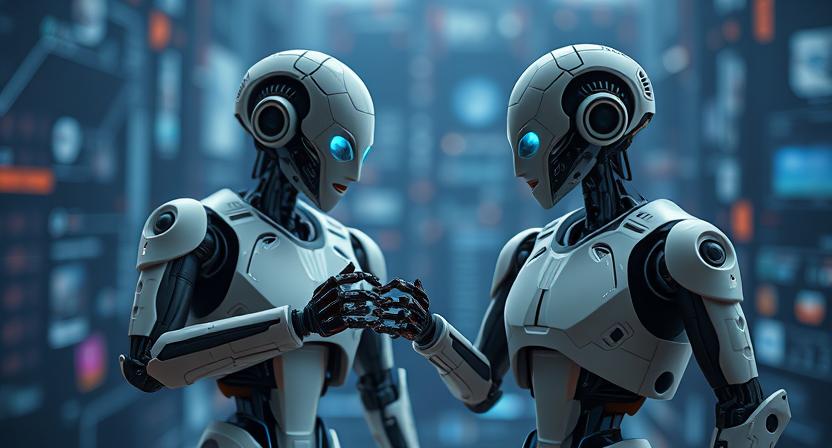Introduction
An artificial intelligence (AI) agent is a system or software that can independently carry out tasks for a user or another system. It does this by planning its own workflow and making use of the tools at its disposal.
AI agents go far beyond just understanding language — they can make decisions, solve problems, interact with external systems, and carry out actions. These intelligent systems are used across a wide range of enterprise applications, from software development and IT automation to code generation and conversational assistants. Powered by advanced natural language processing from large language models (LLMs), AI agents can interpret user input, plan responses step-by-step, and decide when to utilize external tools to complete tasks effectively.
How AI agents workLarge language models (LLMs) are the foundation of AI agents—hence the common term "LLM agents." LLMs models, generate responses based solely on their training data, which limits their ability to access real-time information or adapt dynamically. Agentic AI, on the other hand, extends this capability by incorporating tool use behind the scenes. This allows agents to fetch live data, streamline workflows, and break down complex tasks into manageable subtasks—without requiring human input.
Types of AI agentsAI agents can be categorized based on their intelligence, how they make decisions, and the way they engage with their environment to achieve desired outcomes. While some agents follow fixed, rule-based logic, others leverage machine learning algorithms to adapt and improve their behavior over time.
- 🧠 Simple Reflex Agents
- 🗺️ Model-Based Reflex Agents
- 🎯 Goal-Based Agents
- 📈 Utility-Based Agents
- 🧬 Learning Agents
🧠 Simple Reflex Agents: Simple Reflex Agents are the most basic type of AI agents. They operate by directly responding to the current state of their environment using predefined condition-action rules. These agents don’t consider past experiences or future outcomes—instead, they react immediately based on the information sensed in the moment. In other words, simple reflex agents rely on their sensors to perceive the environment and then execute actions strictly according to a fixed rule set.
🗺️ Model-Based Reflex Agents: Model-Based Reflex Agents build upon simple reflex agents by adding an internal model of the world. While they still use condition-action rules to decide what to do, they maintain a representation of the environment’s current state. This lets them keep track of how past events have influenced the present, enabling more informed and context-aware decisions.
🎯 Goal-Based Agents: Goal-Based Agents take AI beyond simple reflexes by adopting a proactive, goal-driven approach. Instead of just reacting to immediate stimuli with fixed rules, these agents focus on their ultimate objectives and use planning and reasoning to decide the best course of action. By defining a clear goal, they can evaluate various options and choose actions that bring them closer to achieving it, making their behavior more flexible and purposeful.
📈 Utility-Based Agents: Utility-Based Agents take decision-making a step further by evaluating actions based on a utility function, which measures the overall benefit or satisfaction of possible outcomes. Unlike goal-based agents that focus solely on achieving a specific goal, utility-based agents weigh different options and select the one that maximizes overall value. This approach enables more nuanced and balanced decisions, especially when facing multiple goals or trade-offs.
🧬 Learning Agents: Learning Agents stand out by continuously improving their performance through experience. Unlike other agents that depend on fixed rules or models, learning agents adapt their behavior based on feedback from the environment. This ongoing learning process enables them to make better decisions over time, especially in changing or unpredictable situations.
Conclusion
AI agents are transforming how machines interact with the world by combining intelligence, decision-making, and adaptability. From simple reflex agents that respond to immediate stimuli to advanced learning agents that evolve over time, each type serves a unique role in solving complex problems. Powered by technologies like large language models and agentic tool use, AI agents are becoming increasingly capable of handling real-world tasks autonomously and efficiently. As these systems continue to advance, they will unlock new possibilities across industries—from automation and software development to personalized digital assistants—shaping the future of intelligent technology.


